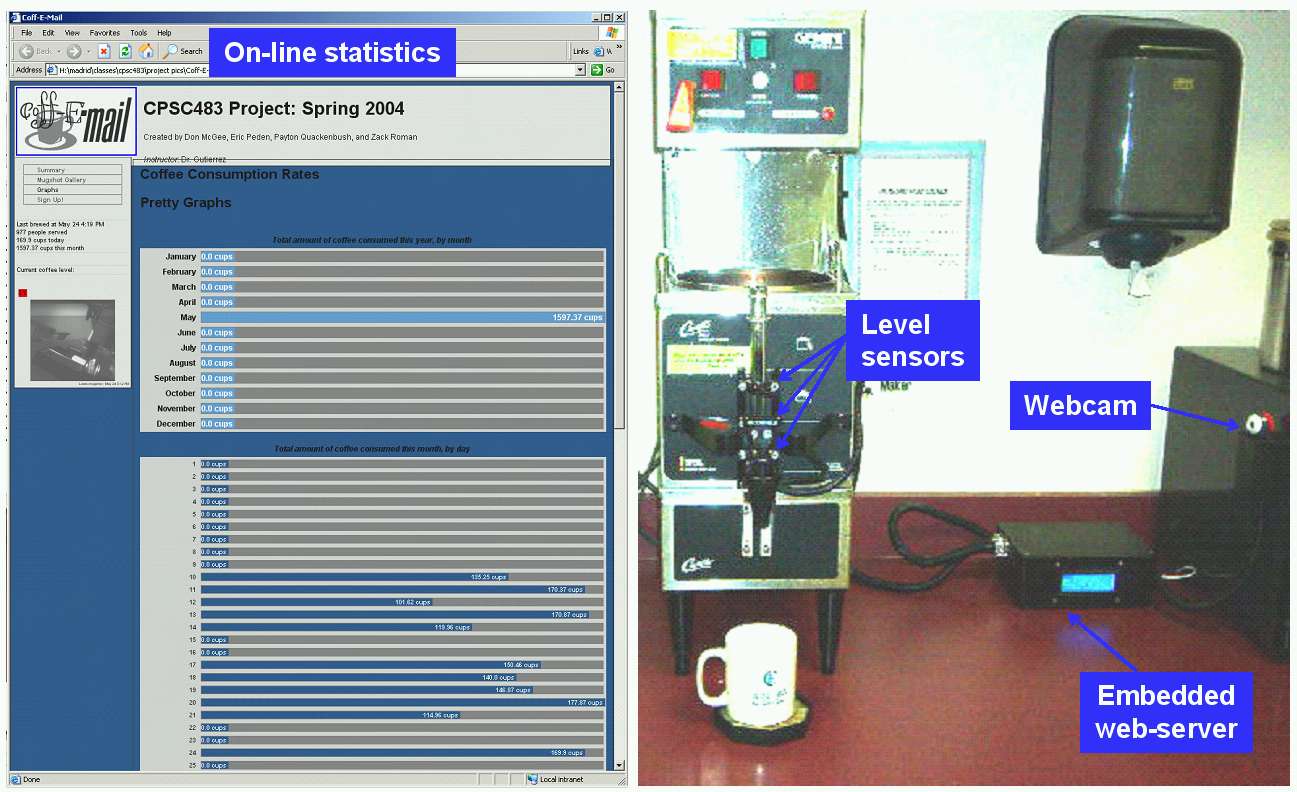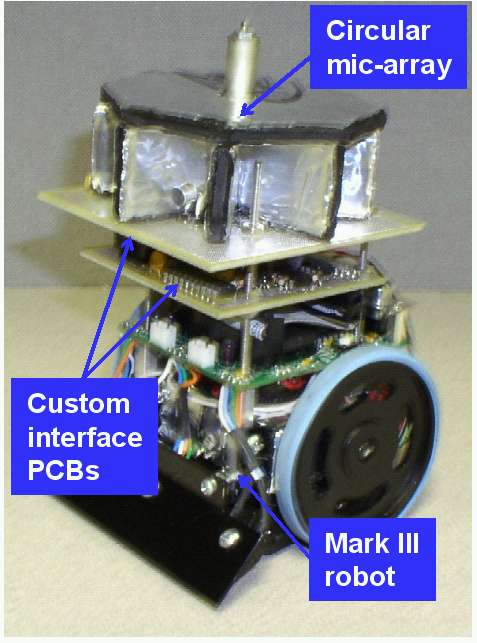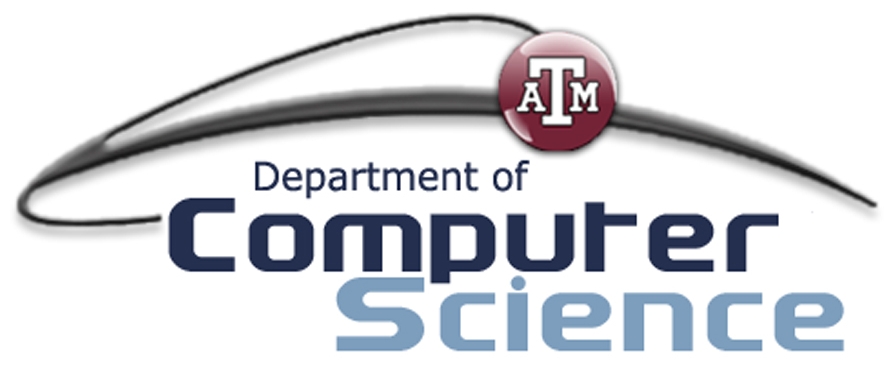Home
News
Documents
Projects
Links
Gallery
Contact
|
|
Gallery of movie demos
from (some) previous projects
Gallery of pictures
from (some) previous projects

|
Coff-e-mail. The goal
of this project was to develop a low-cost embedded web-server that
would keep logs of coffee consumption
in the department’s student lounge. The system contained photocells
for measuring current levels of coffee, motion sensors for detecting
when coffee was being poured, and a low-cost camera to capture an
image of the coffee mug. The system kept statistics on-line and also
informed registered users when a fresh coffee pot was being brewed. |
|
|
|
Motion tracking
with infra-red imaging. The goal of this
project was to develop a motion capture system based on IR imaging.
The students designed a head-mounted frame to allow recovery of 3D
head rotations (roll,
pitch and yaw), developed a graphical user interface, automated
a number of otherwise time-consuming tasks (e.g., initial detection
of markers in the face), and integrated the audio-visual capture
system with an MPEG-4 compliant facial animation engine. |
|
|
|
|
|
Omni-Directional
Vision System for Mobile Robots.
The objective of this project was to design and integrate an omni-directional
vision system (ODVS) for a mobile robot. The ODVS consisted of a
CCD array (based on the CMUCam) coupled with a spherical mirror (a
chromed light bulb), that generated a 360-degree view of the surroundings
of the robot. The students were able to integrate the ODVS with a
miniature mobile robot, and track a color moving target in real-time. |
|
|
|
Acoustic Navigation
for Mobile Robots. The goal of this project was to
develop a microphone array to allow a miniature mobile
robot to detect acoustic beacons. The array consisted of eight
miniature microphones in a ring configuration to provide 360
degree sound localization.
The students designed a custom printed circuit interface board
for the microphones, which also contained a programmable filter
bank
that allowed the robot to “listen” to eight different
center frequencies. |
 |
|
|
|
|
Dead-Reckoning
System for Mobile Robots. The objective
of this project was to design a dead-reckoning system for mobile
robots based on odometry, inertial navigation and a digital compass.
Odometry was achieved with optical encoders attached to the wheel
axles of a miniature robot. The inertial navigation consisted of
a 2-axis MEMS accelerometer and a MEMS gyroscope, which allowed the
robot to measure linear and angular accelerations. These two dead-reckoning
modalities were complemented with information from a digital compass.
The students also investigated sensor fusion strategies to combine
information from all these sensors. |
|
|
